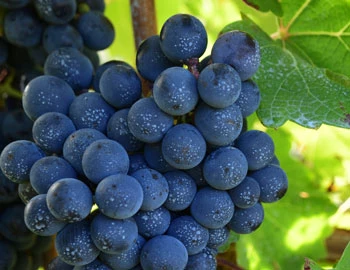
Château Latour 2017
AC Pauillac 1er Cru classé, 375 ml

| Grape variety: | Cabernet Sauvignon, Merlot, Petit Verdot |
| Producer: | Château Latour |
| Origin: | France / Bordeaux / Pauillac |
| Other bottle sizes: |
Description
Citing Robert Parker The Wine Advocate "The 2017 Latour is a blend of 92.1% Cabernet Sauvignon, 7.8% Merlot and 0.1% Petit Verdot with 13.3% alcohol and an IPT of 66. Deep garnet-purple in color, it starts off a little broody before exploding from the glass with powerful scents of ripe blackcurrants, blackberry pie and preserved black cherries plus touches of cedar chest, fenugreek, cumin seed and charcoal with emerging wafts of violets, dark chocolate, star anise and fertile loam. Medium- bodied, this may be one of the most elegant, great Latours ever, revealing layer upon layer of fresh, crunchy black fruits with a vast array of exotic spice and floral nuances, framed by super ripe, super fine-grained tannins, finishing very long with mineral sparks coming through. This is so nuanced and perfumed that I imagine, in 50 years, this wine could be mistaken for a great red Burgundy."
Attributes
| Origin: | France / Bordeaux / Pauillac |
| Grape variety: | Cabernet Sauvignon, Merlot, Petit Verdot |
| Note: | Contains sulphites |
Cabernet Sauvignon
The backbone of Bordeaux
The Cabernet Sauvignon gives the Bordeaux its backbone, yielding deep violet wines with powerful tannins and endless ripening potential. It is the top dog in Médoc, and is placed in all five premier crus of Bordelais. When young, it often appears strict and unapproachable, but with advancing years, its tannins round off. It is wonderfully velvety, and yet always maintains its freshness. Typical flavours include cassis, graphite and cedar. Wherever Cabernet Sauvignon is found, Merlot is not far away. It complements the robust structure of Cabernet with softness, fruit and richness. The Cabernet Sauvignon is the most-exported vine in the world. It delivers persuasive qualities in Italy as an ingredient of the Super Tuscan, or as the flagship variety from California. There, it is lovingly titled “Cab Sauv”. Meat fans should be aware that it fantastically accompanies a grilled entrecôte. The family tree of Cabernet Sauvignon is surprising: its parents are Cabernet Franc and the white Sauvignon blanc.

Petit Verdot
Bordeaux’s secret weapon
It is commonly said that the Petit Verdot originated in Bordeaux. But genetically, it is closer to a group of vines from near the Pyrenees, which are most likely descended from wild clematis. In French, these wild plants are called “lambrusques”, and the Petit Verdot is also known under the synonym Lumbrusquet. It is a high quality grape: very dark and spicy with notes of cassis and graphite, plenty of robust tannins and strong acidity. Most major Bordeaux contain a small proportion of Petit Verdot. Appropriately, it is valued wherever wines are produced according to the Bordeaux recipe. For example, in Italian Maremma or in California, where it covers the largest area worldwide. It is almost never vinified purely by itself. Incidentally, its name, derived from “vert”, meaning green, alludes to its Achilles heel: in cool weather it tends to form small, seedless green grapes.

Pauillac
Pauillac: Aristocratic crus
No appellation embodies the noble Bordeaux virtues on such a fine, almost majestic level as Pauillac, the peninsula resting in the Médoc. With Lafite-Rothschild, Latour and Mouton-Rothschild, it is also home to the majority of the five premier crus. The grandeur of Pauillac crus is quite clearly based on the Cabernet Sauvignon variety, which, with a share of over 70 percent, certainly dominates in assemblages, and also lends the wines excellent aging potential.

Bordeaux
Bordeaux: high prestige, high quality
With a total area of around 115,000 hectares, Bordeaux may not be France’s largest wine-growing region, but it is certainly its most prestigious. The range of wines produced here today is enormous: ranging from red everyday wines with a great relationship between price and quality to exclusive, and accordingly expensive, premier crus. Elegant white wines and noble sweet specialties round out the spectrum.

France
France – Philosophy in a bottle
According to French philosophy, wine should be an expression of the soil and climate. They use the word “terroir” to describe this. Terroir makes every wine different, and many especially good. French wine is regarded worldwide as an expression of cultural perfection. The French believe that humans are responsible for the quality of the berries, the vine variety for their character, and nature for the quantity. This philosophy can be expressed succinctly as: “the truth is the vineyard, not the man.”


